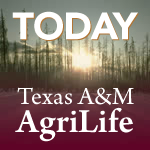Cooperator: Helms Farm/Texas Agricultural Experiment Station and
Texas Cooperative Extension, Halfway, TX – 2002
Dirk Aaron, Chris Bishop, Greg Cronholm,
Randy Boman, Mark Kelley, and Mark Stelter
County Extension Agent-Agriculture, Hale County,
County Extension Agent-Natural Resources, Hale County
Extension Agent-IPM, Hale/Swisher Counties,
Extension Agronomist-Cotton and Extension Assistants-Cotton
Hale County
Summary: Significant differences were noted for most parameters measured (Table 1 and Table 2). Lint turnout ranged from 25.8% to 29.0%. Lint yields varied from a low of 1337 lb/acre to a high of 1517 lb/acre. Lint loan values were generally high all across the varieties. After adding lint and seed value, total value for varieties ranged from a low of $748.73 to a high of $883.86. When subtracting ginning and systems costs, the net value among varieties ranged from a low of $625.27 up to $740.19, a difference of $114.92. These data indicate that substantial differences can be obtained in terms of net value/acre due to variety selection. It should be noted that some inclement weather was encountered in this trial prior to harvest. Some picker type varieties and lesser stormproof stripper types did experience some preharvest losses due to weather conditions, however, high intensity rainfall and/or high wind events were not excessive.
Objective: The objective of this project was to compare yields, gin turnout, fiber quality and economics of transgenic varieties in cooperator fields.
Materials and
Methods:
Varieties: FiberMax 989RR, Stoneville 2454R, All-Tex Atlas RR, Paymaster 2280BG/RR, Paymaster 2344BG/RR, Paymaster 2326RR, and Paymaster 2266RR
Experimental design: Randomized complete block with 3 replications
Seeding rate: 15 lb seed/acre in 30-inch row spacing (John Deere Max Emerge II vacuum planter)
Plot size: 8 rows by variable length due to pivot pie (827-1345 feet long)
Planting date: May 21
Weed management: Prowl at 1qt/acre was broadcast applied preplant and incorporated with a rolling cultivator at on April 11. Roundup UltraMax was applied over-the-top on June 19 and post-directed on July 22 and at a rate of 26 oz/acre + ammonium sulfate (17 lb/100 gallons of spray mix)
Mepiquat chloride: No mepiquat chloride was used at this site.
LEPA irrigation:
June: 1.20″
July: 4.43″
August: 6.00″
Rainfall:
April: 1.21″ July: 0.39″
May: 0.14″ August: 3.91″
June: 0.41″
Total moisture: 17.69″
Insecticides: Temik was applied in-furrow at 3 lb/acre. No additional insecticides were required (lepidopterous larvae populations did not exceed thresholds). This location is in an active boll weevil eradication zone, but no applications were made by the Texas Boll Weevil Eradication Program.
Fertilizer: Using a fertilizer-knife rig, 18 lb N/acre and 60 lb P2O5/acre using 10-34-0 was applied preplant on March 22. An additional 96 lb N/acre of fluid nitrogen fertilizer (32-0-0) was applied during the growing season via fertigation.
Harvest aids: Ethephon 6 at 1.3 pt/acre + Ginstar at 6 oz/acre were applied on October 17 followed by Boa at 15 oz/acre on October 22.
Harvest: Plots were harvested on November 19 using a commercial John Deere 7445 with field cleaner bypassed. Harvested material was dumped into a weigh wagon with integral digital scales to determine individual plot weights. Plots yields were adjusted to lb/acre.
Gin turnout: Grab samples were taken by plot and ginned at the Texas A&M Center at Lubbock to determine gin turnouts.
Fiber analysis: Lint samples were submitted to the International Textile Center (ITC) at Texas Tech University for HVI analysis, and USDA loan values were determined for each variety by plot.
Ginning cost Ginning costs were based on $2.25 per cwt. of bur cotton and $95 per ton for seed
and seed values: value. Ginning costs do not include checkoff.
System cost: Systems cost was determined by variety per acre using manufacturer’s suggested retail prices for seed, and appropriate technology fees for Bollgard and/or Roundup Ready based on the 15 lb/acre seeding rate.
Results and
Discussion: Significant differences were noted for most parameters measured (Table 1 and Table 2). Lint turnout ranged from 25.8% to 29.0%. Lint yields varied from a low of 1337 lb/acre to a high of 1517 lb/acre. Lint loan values were generally high all across the varieties. After adding lint and seed value, total value for varieties ranged from a low of $748.73 to a high of $883.86. When subtracting ginning and systems costs, the net value among varieties ranged from a low of $625.27 up to $740.19, a difference of $114.92. These data indicate that substantial differences can be obtained in terms of net value/acre due to variety selection. It should be noted that some inclement weather was encountered in this trial prior to harvest. Some picker type varieties did experience some preharvest losses due to weather conditions, however, high intensity rainfall and/or high wind events were not excessive. These losses were more associated with the open boll picker-type variety (FiberMax 989) and the less-stormproof stripper type (Stoneville 2454R). Additional multi-site and multi-year applied research is needed to evaluate varieties across a series of environments.
Acknowledgments: Appreciation is expressed to Danny Carmichael, Research Associate – AG-CARES; Doug Nesmith, Farm Research Manager at Texas A&M Research Center-Halfway, TX; Jim Bordovsky, Research Agricultural Engineer-Irrigation, Texas A&M Research Center-Halfway, TX; and John Everitt, Research Assistant, and Dr. John Gannaway, Texas Agricultural Experiment Station, Lubbock, TX, for their assistance.
Disclaimer Clause: Trade names of commercial products used in this report are included only for better understanding and clarity. Reference to commercial products or trade names is made with the understanding that no discrimination is intended and no endorsement by the Texas A&M University System is implied. Readers should realize that results from one experiment do not represent conclusive evidence that the same response would occur where conditions vary.

